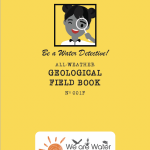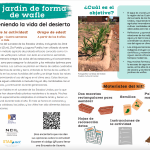
Un jardín de forma de wafle
La gente indígena del suroeste de los Estados Unidos, incluyendo los Diné (Navajo), A:shiwi (Zuni), Zia Pueblo y Laguna Pueblo, han utilizado durante generaciones un método agrícola de probada eficacia conocido como Un jardín de forma de wafle para cultivar con éxito en el entorno semiárido. Esta técnica centenaria integra los ciclos de las…
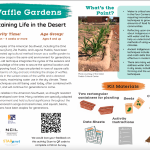
Waffle Garden
Indigenous peoples of the American Southwest, including the Diné (Navajo), A:shiwi (Zuni), Zia Pueblo, and Laguna Pueblo, have been using a time-tested agricultural method known as a waffle garden to successfully grow crops in the semi-arid environment for generations. This centuries-old technique integrates the cycles of the seasons and…
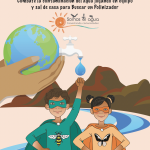
Sé un héroe del ecosistema del agua
Combate la contaminación del agua jugando en equipo y sal de casa para Buscar un Polinizador
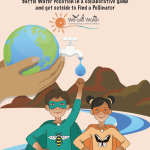
Be a Water Ecosystem Hero
Work with a partner to protect a river from water pollution in a collaborative board game. Search for evidence of pollinators in your backyard and draw what you find. And learn about the connections between water, pollution and pollinators.
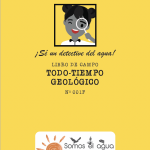
¡Sé un detective del agua!
Ser un detective del agua significa ser un buen observador. Los y las detectives del agua se fijan no solo en cómo el agua cambia la superficie de nuestro planeta, pero también en cómo el agua soporta la vida terrestre y es en turno afectada a su por los seres vivos que llaman a la Tierra su hogar.
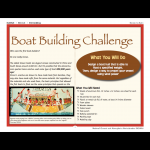
Boat Building Challenge
Use aluminum foil to make boats and then test designs by seeing how many pennies or paperclips they can hold.

A Drop in Your Hand - Water Stewardship Activity
See the relative volume of water available that is clean, safe, and available to drink.
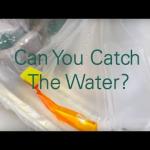
Can You Catch The Water?
Students construct three-dimensional models of water catchment basins using everyday objects to form hills, mountains, valleys and water sources. They experiment to see where rain travels and collects, and survey water pathways to see how they can be altered by natural and human activities. Students discuss how engineers design structures that…
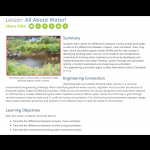
All About Water!
Students learn about the differences between surface and ground water as well as the differences between streams, rivers and lakes. Then, they learn about dissolved organic matter (DOM) and the role it plays in identifying drinking water sources. Then students are introduced to conventional drinking water treatment processes by developing and…
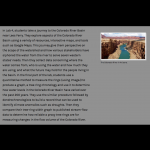
Sharing a River - The Colorado River Story
In Lab 4, students take a journey to the Colorado River Basin near Lees Ferry. They explore aspects of the Colorado River Basin using a variety of resources, interactive maps, and tools such as Google Maps. This journey give them perspective on the scope of the watershed and how various stakeholders have siphoned the water from the river to serve…
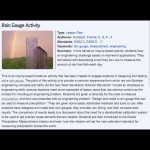
Rain Gauge Activity
In this hands-on inquiry-based activity, students face an engineering challenge based on real-world applications. They are tasked with developing a tool they can use to measure the amount of rain that falls each day. This is more of a mini unit than a stand alone activity. This activity takes one to three 60 min class periods. Additional…

Evaporation Investigation
Students observe the process of evaporation, make comparisons about the process, then construct a diagram and use it to describe the process of evaporation. This activity takes four 30 minute class periods. Additional materials are required.
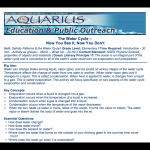
The Water Cycle: Now You See It, Now You Don't
This lesson is an instructor demonstration that focuses specifically on two aspects of the water cycle: evaporation and condensation. This is a well described instructor led demonstration for introducing and exploring the water cycle. This activity takes approximately 1 hour 35 minutes, but can be broken into separate lessons. Additional…
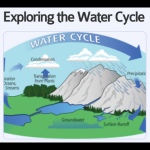
Exploring the Water Cycle
In this lesson, students will learn about the water cycle and how energy from the sun and the force of gravity drive this cycle. This learning activity takes at least two 45 minute class periods.
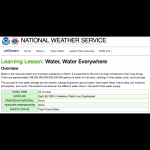
Water Water Everywhere
This classroom demonstration illustrates the amount of water stored in various parts of the Earth system in a straightforward manner. Students estimate the proportions of water in the oceans, icecaps and glaciers, groundwater, freshwater lakes, inland seas, soil moisture, atmosphere, and rivers. Then they fill beakers with the actual proportion…
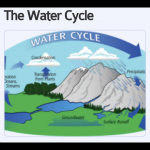
The Water Cycle
This activity was developed to give participants an understanding of Earth's water cycle by completing a WebQuest and building a model of the water cycle. This activity takes 1 hour.
